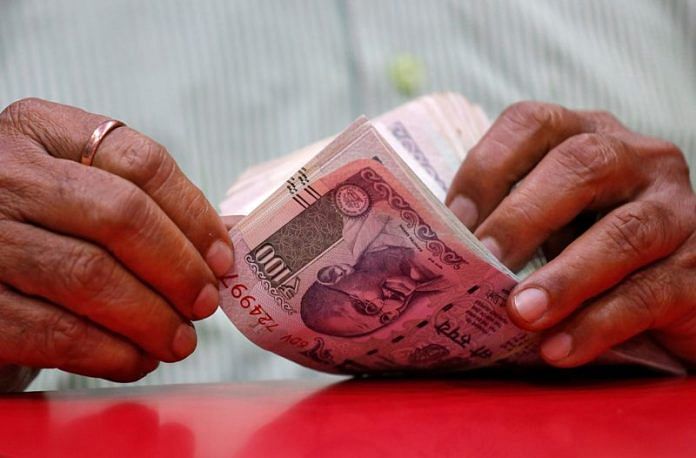By Jaspreet Kalra
MUMBAI (Reuters) – The Indian rupee held its ground on Wednesday, supported by mild dollar sales by state-run banks that also blunted the impact of rising U.S. bond yields, which dragged the local currency’s regional peers lower.
The rupee was at 84.0725 against the U.S. dollar as of 11:00 a.m. IST, compared with its close at 84.0775 in the previous session.
Asian currencies were down between 0.1% and 0.4% on the day, after the 10-year U.S. Treasury yield rose to a three-month high of 4.23% in Asia trading, boosted by heightened odds of a victory for Donald Trump in the upcoming U.S. elections.
The rise in U.S. bond yields also boosted the dollar, which was last at 104.15, close to its highest level since early August.
“The risks remain skewed towards a stronger dollar and weaker risk-sensitive currencies as Trump hedges grow into the vote,” ING Bank said in a note.
The rupee had weakened to its record low of 84.0825 on Tuesday, pressured by outflows from local stocks. Intervention by the Reserve Bank of India (RBI), via state-run banks, helped limit losses.
Goldman Sachs on Tuesday lowered Indian equities to “neutral” from “overweight”, citing the country’s slowing economic growth, which would weigh on corporate earnings amid record foreign outflows from local equities.
Foreign investors have net sold over $8.5 billion of local stocks in October so far.
The rupee’s losses, however, have been limited by routine interventions by the RBI. On Wednesday, state-run banks “were mildly on offer (on USD/INR), which should limit upside,” a trader at a state-run bank said.
Investors now await remarks from a Federal Reserve policymaker later in the day, alongside the release of the Fed’s ‘Beige Book’, a summary of current U.S. economic conditions, for cues on the future path of policy rates.
(Reporting by Jaspreet Kalra; Editing by Abinaya Vijayaraghavan)
Disclaimer: This report is auto generated from the Reuters news service. ThePrint holds no responsibilty for its content.






